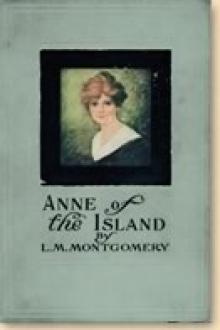A History of Art for Beginners and Students, Clara Erskine Clement Waters [best beach reads .txt] 📗

- Author: Clara Erskine Clement Waters
- Performer: -
Book online «A History of Art for Beginners and Students, Clara Erskine Clement Waters [best beach reads .txt] 📗». Author Clara Erskine Clement Waters
Glass-painting dates from this time. The very earliest specimens of which we know are from the eleventh century. Before that time there had been transparent mosaics made by putting together bits of colored glass, and arranging them in simple, set and ornamental patterns. Such mosaics date from the earliest days of Christianity, and were in use as soon as glass was used for windows. From ancient writings we know that some windows were made with pictures upon them as long ago as a.d. 989; but nothing now remains from that remote date.
There is a doubt as to whether glass-painting originated in France or Germany. Some French authors ascribe its invention to Germany, while some German writers accord the same honor to France. Remains of glass-painting of the eleventh century have been found in both these countries; but it is probable that five windows in the Cathedral of Augsburg date from 1065, and are a little older than any others of which we know. This picture of David is from one of them, and is probably as old as any painted window in existence.
The oldest glass-painting in France is probably a single fragment in the Cathedral of Le Mans. This cathedral was completed in 1093, but was badly burned in 1136, so that but a single piece of its windows remains; this has been inserted in a new window in the choir, and is thus preserved. With the beginning of the twelfth century, glass-painting became more frequent in Europe, and near the end of this century it was introduced into England, together with the Gothic style of architecture. Very soon a highly decorative effect was given to glass-painting, and the designs upon many windows were very much like those used in the miniatures of the same time. The stained glass in the Cathedral of St. Denis, near Paris, is very important. It dates from about 1140-1151, and was executed under the care of the famous Abbot Suger. He employed both French and German workmen, and decorated the entire length of the walls with painted windows. St. Denis was the first French cathedral in the full Gothic style of architecture. The present windows in St. Denis can scarcely be said to be the original ones, as the cathedral has suffered much from revolutions; but some of them have been restored as nearly as possible, and our illustration (Fig. 22) will give you a good idea of what its windows were.
The stripes which run across the ground in this window are red and blue, and the leaf border is in a light tone of color. There are nine medallions; the three upper ones have simply ornamental designs upon them, and the six lower ones have pictures of sacred subjects. The one given here is an Annunciation, in which the Abbot Suger kneels at the feet of the Virgin Mary. His figure interferes with the border of the medallion in a very unusual manner.
Perhaps the most important ancient glass-painting remaining in France is that of the west front of the Cathedral of Chartres. It dates from about 1125, when this front was begun; there are three windows, and their color is far superior to the glass of a later period, which is in the same cathedral. The earliest painted glass in England dates from about 1180. Some of the windows in Canterbury Cathedral correspond to those in the Cathedral of St. Denis.
In the Strasbourg Cathedral there are some splendid remains of painted glass of the Romanesque period, although they were much injured by the bombardment of 1870. Fig. 23 is from one of the west windows, and represents King Henry I.
This is an unusually fine example of the style of the period before the more elaborate Gothic manner had arisen; the quiet regularity of the drapery and the dignified air of the whole figure is very impressive.
An entirely different sort of colored windows was used in the churches and edifices which belonged to the Cistercian order of monks. The rule of this order was severe, and while they wished to soften the light within their churches, they believed it to be wrong to use anything which denoted pomp or splendor in the decoration of the house of God. For these reasons they invented what is called the grisaille glass: it is painted in regular patterns in gray tones of color. Sometimes these windows are varied by a leaf pattern in shades of green and brown, with occasional touches of bright color; but this is used very sparingly. Some of these grisaille windows are seen in France; but the finest are in Germany in the Cathedral of Heiligenkreuz: they date from the first half of the thirteenth century.
THE FINAL, OR GOTHIC PERIOD.
The Gothic order of architecture, which was perfected during this period, had a decided influence upon the painting and sculpture of the time; but this influence was not felt until Gothic architecture had reached a high point in its development. France was now the leading country of the world, and Paris came to be the most important of all cities: it was the centre from which went forth edicts as to the customs of society, the laws of dress and conduct, and even of the art of love. From France came the codes of chivalry, and the crusades, which spread to other lands, originated there. Thus, for the time, Paris overshadowed Rome and the older centres of art, industry, and science, with a world-wide influence.
Although the painting of this period had largely the same characteristics as that of the Romanesque period, it had a different spirit, and it was no longer under the control of the clergy. Before this time, too, painters had frequently been skilled in other arts; now it became the custom for them to be painters only, and besides this they were divided into certain classes of painters, and were then associated with other craftsmen who were engaged in the trade which was connected with their art. That is, the glass-painters painted glass only, and were associated with the glass-blowers; those who decorated shields, with the shield or scutcheon makers, and so on; while the painters, pure and simple, worked at wall-painting, and a little later at panel-painting also. From this association of artists and tradesmen there grew up brotherhoods which supported their members in all difficulties, and stood by each other like friends. Each brotherhood had its altar in some church; they had their funerals and festivals in common, and from these brotherhoods grew up the more powerful societies which were called guilds. These guilds became powerful organizations; they had definite rights and duties, and even judicial authority as to such matters as belonged to their special trades.
All this led to much greater individuality among artists than had ever existed before: it came to be understood that a painter could, and had a right to, paint a picture as he wished, and was not governed by any priestly law. Religious subjects were still painted more frequently than others, and the decoration of religious edifices was the chief employment of the artists; but they worked with more independence of thought and spirit. The painters studied more from nature, and though the change was very slow, it is still true that a certain softness of effect, an easy flow of drapery, and a new grace of pose did appear, and about a.d. 1350 a new idea of the uses and aims of painting influenced artists everywhere.
About that time they attempted to represent distances, and to create different planes in their works; to reproduce such things as they represented far more exactly than they had done before, and to put them in just relations to surrounding places and objects; in a word, they seemed to awake to an appreciation of the true office of painting and to its infinite possibilities.
During this Gothic period some of the most exquisite manuscripts were made in France and Germany, and they are now the choicest treasures of their kind in various European collections.
Fig. 24, of the birth of the Virgin Mary, is from one of the most splendid books of the time which was painted for the Duke de Berry and called the Great Book of the Hours. The wealth of ornament in the border is a characteristic of the French miniatures of the time. The Germans used a simpler style, as you will see by Fig. 25, of the Annunciation.
The influence of the Gothic order of architecture upon glass-painting was very pronounced. Under this order the windows became much more important than they had been, and it was not unusual to see a series of windows painted in such pictures as illustrated the whole teaching of the doctrines of the church. It was at this time that the custom arose of donating memorial windows to religious edifices. Sometimes they were the gift of a person or a family, and the portraits of the donors were painted in the lower part of the window, and usually in a kneeling posture; at other times windows were given by guilds, and it is very odd to see craftsmen of various sorts at work in a cathedral window: such pictures exist at Chartres, Bourges, Amiens, and other places.
About a.d. 1300 it began to be the custom to represent architectural effects upon colored windows. Our cut is from a window at Konigsfelden, and will show exactly what I mean (Fig. 26).
This style of decoration was not as effective as the earlier ones had been, and, indeed, from about this time glass-painting became less satisfactory than before, from the fact that it had more resemblance to panel-painting, and so lost a part of the individuality which had belonged to it.
Wall-paintings were rare in the Gothic period, for its architecture left no good spaces where the pictures could be placed, and so the interior painting of the churches was almost entirely confined to borders and decorative patterns scattered here and there and used with great effect. In Germany and England wall-painting was more used for the decoration of castles, halls, chambers, and chapels; but as a whole mural painting was of little importance at this time in comparison with its earlier days.
About a.d. 1350 panel pictures began to be more numerous, and from this time there are vague accounts of schools of painting at Prague and Cologne, and a few remnants exist which prove that such works were executed





Comments (0)